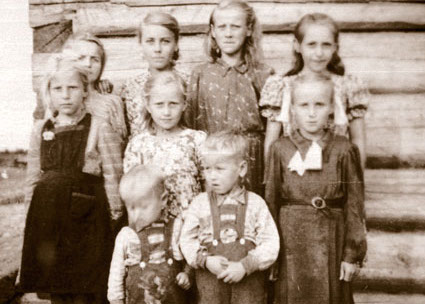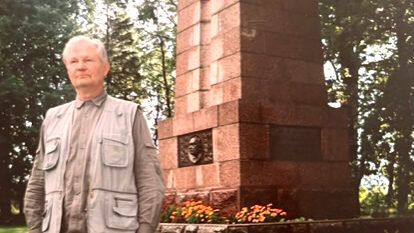Some 90,000 ‘enemies of the people' were seized and deported to far hinterlands of the Soviet Union. It was considered to be one of the most complex deportation actions by the Soviet authorities.
Many historians have considered the deportations to be an act of genocide due to the high rate of death caused by the Soviets, whether through neglect or premeditation, not providing suitable clothing or housing for the severe conditions at the Siberian destinations. However, based on the Nuremberg Charter, the European Court of Human Rights and other recognized international judicial principles, the March deportations constituted a crime against humanity.
The Soviet regime's orders were to target Estonian nationalists, relatives of and those sympathetic towards or supporting the Estonian resistance movement, the Forest Brothers (Metsavennad), veterans who had served in the German forces and the kin of those suspected of anti-Soviet activities and already in the Soviet Gulag. Officially the operation was planned to speed up ”dekulakization”, to intimidate people thereby facilitating the forced collectivization of rural households. It was obviously also intended to destroy the support base for anti-Communist insurgency by the Forest Brothers against the totalitarian occupation. The deportations were successful. Within a short few weeks most of the rural families had accepted (reluctantly by many) collectivization and re-organized themselves into collective farms – kolkhozes.
Success was inevitable because the preparations for executing Operation Priboi were detailed and comprehensive. The top-secret decision, No. 390-1388ss was taken by the USSR Council of Ministers on January 29, 1949. From this and other orders that followed a thorough account has been compiled of a well-coordinated attack on civilian populations.
To Estonia and Latvia alone an additional 8850 soldiers from various units were deployed to supplement the occupation military already on location. Since telecommunications was vital to ensure an effective operation, the MGB with 2210 secret police personnel took over all civilian telephone exchanges. Requisitioned were 8,422 trucks and 1250 tons of fuel. Some of the vehicles were stationed just outside the borders of the Baltic republics in advance so as not to raise suspicions and only sent in at the start of the operation. Sixty-six freight trains were used to transport the deported families to the distant locations.
Of the 76,212 army, extermination battalion, secret police, interior ministry troops and other personnel involved, the actual seizure of families were carried out by nine-ten man operative teams which included three Soviet MGB agents, two extermination soldiers and four or five local Communist party activists (some 23,024 party activists participated in addition to the troops numbered above) who were also armed. These units were supplemented by an extra 5025 submachine guns and 1900 rifles. Tipped off by the arrival of fresh troops, trains and vehicles, families that successfully found hiding places were later still rounded up by smaller operations.
Since on November 1, 1948 the party's official membership numbered 16,650, one can conclude that all Communists in Estonia participated in the deportations. Their wage bonus consisted of the legal right to plunder all of the 7500 Estonian homes from which they took families.
Fully 72% of the 94,779 Baltic deportees were women and children under 16. It was reported to Stalin that 2,850 were sickly solitary old people, 1785 parentless children, and 146 disabled. The oldest deportee was a grandmother – 95 year old Maria Räägel of Abja township.
The commandant of Operation Priboi in Hiiumaa was Arnold Meri, the first secretary of the young Communist movement, who, as late as 1988 justified in the newspaper ‘Edasi' that the deportations were a normal way of relocating people. Meri insisted that the action cannot be called a military punishment of the politically untrustworthy. It was interesting to note that Vladimir Putin at a May 9th banquet honouring Red Army veterans invited Arnold Meri to sit beside him at the banquet table as a special guest of honour. At the time Meri was being indicted for crimes against humanity by Estonian judicial authorities.
The youngest deportee was three-day-old Anne Ojaäär from Hiiumaa. There departure to Siberia became very urgent so that on March 28th the three member family, 22 year old Mother Õie, two year old son Toivo and the baby were flown by plane from Hiiumaa to the Tallinn Ülemiste station and put on the last departing train # 97305 to Siberia. The baby was able to withstand the harsh conditions but died one year later. Arnold Meri's administrative skills took credit for this.
The cold-blooded, systematic preparations contrasted with the unbelievable cruelty of the operation is an indelible part of Estonians' historical memory. The account above does not include the inhuman conditions of the long tortuous trip in packed cattle cars to bleak destinations. It doesn't include the constant battle for survival in isolated settlements.
The deportations are not a part of a hazy past whose distance in time obscures the facts. But it is a part of living memory in the minds of Lithuanians, Latvians, Estonians.
Laas Leivat




